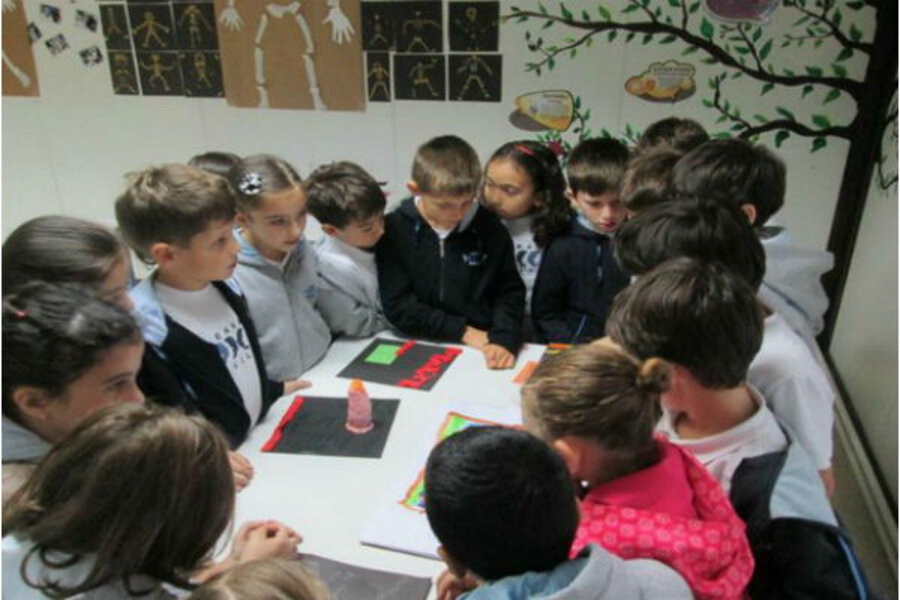Grade school activists bring change from classroom to streets
Loading...
Fifteen years ago a devastating earthquake struck northwest Turkey and more than 17,000 people lost their lives. In the city of Adapazari, 70 percent of all buildings were destroyed, leaving hundreds of thousands homeless.
In the immediate aftermath of the earthquake, a group led by senior Ashoka fellow Ibrahim Betil and the ENKA foundation set about building a temporary school where children who had lost their homes or families could both study and live. Over the course of just 27 days and in collaboration with local residents, a site was found and construction was finished.
Since the school bell rang in the very first class in October of 1999, the fates of the school and the local community have remained inextricably linked. As the school’s buildings have slowly changed from prefabricated to permanent, tragedy has become opportunity.
Today the social activist flame that was burning in the school’s founders is being ignited in its pupils. This mentality permeates every lesson and every activity undertaken at the school. Through inquiry-based and experiential learning techniques, students’ natural curiosities are constantly engaged, empowering them to actively solve the issues impacting their lives and their communities. These pupils are authors of their own narratives.
Transforming Transport in the 3rd Grade:
Take, for example, a recent third grade unit on transportation. The class was discussing public transport in the city and how it could be improved. However, as boarding students who rarely used the system, they confessed to not feeling genuinely concerned or passionate about the issues at hand.
How could the students learn to relate to a community issue they were admittedly disconnected from? The bright idea of one of the pupils was to immerse the class in all aspects of the public transportation system. Sure enough, the class spent the next week traveling on buses and cycling local roads, conducting research by speaking to locals that revealed a plethora of problems: infrequent and overcrowded buses to some zones, dangerous roads for cyclists, and a general lack of infrastructure.
Having experienced these issues themselves and seen them through the eyes of their fellow community members, the pupils felt inspired to act. Indifference had become constructive anger and immersion in the issue had turned empathy into action.
The children embarked on a letter writing “lobbying” campaign, sending 48 letters to local government officials outlining individual concerns about the local transport and recommendations for how to solve the issues raised.
Young people in Turkey are very rarely given a voice or a platform to express their views or have an influence on societal decisions. So the class was skeptical about what tangible impact their work might have.
They were pleasantly surprised, however, when the ministers came to the school to and the class got the chance to put their ideas forward in person and since then, changes have been afoot: bus routes have been adjusted according to the kids’ suggestions and plans for a new tramway and bicycle lanes have been added and every child received a personal reply to their letter.
The effect on the class has been one of empowerment: “Having previously questioned both if people would listen to them and their own capacity to have an impact, they now really believe they can make a difference!” explained Zuhal, a teacher at the school.
Rather than “just” being the policy and boardroom level influencers of tomorrow, at ENKA Adapazari, the kids are disrupting systems, right now.
So what can be done in the classroom to cultivate “pupil activists”? Here are the school’s top tips:
Create a lively “Debate Atmosphere.” Generate a list of problems and then discuss all possible solutions. Then allow children as a group to work out which ones are appropriate.
Appreciate the value of student contribution. In this school, students don’t just “rubber stamp” ideas developed by adults; rather, they are meaningfully involved as systemic decision-makers. Every decision that is taken in the school is evaluated using the Arnstein Ladder of participation.
Speak to the wider community. Interviewing families and neighbors about something seemingly trivial provides different perspectives and empathetic understanding of problems
Find real life and tangible “out of the classroom” connections with all of the learning in the school. This makes it more authentic and encourages students to be more active to create solutions to problems.





